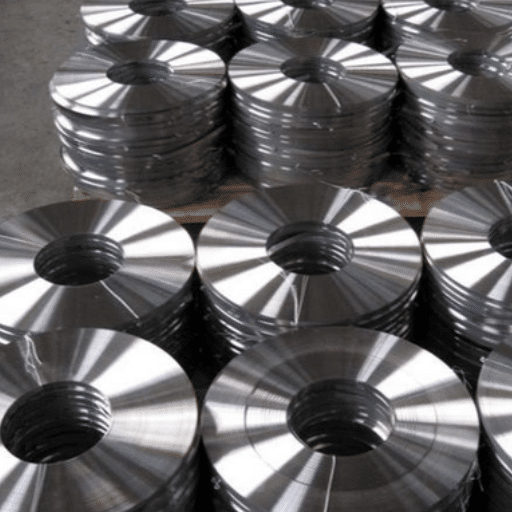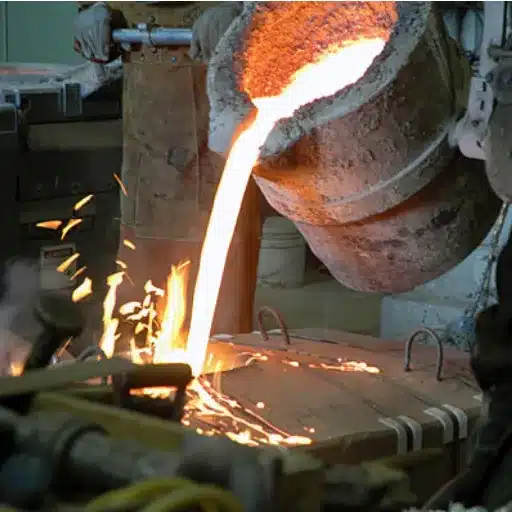Due to its long lifespan, resistance to corrosion, and attractive polished look, stainless steel is the backbone of various industries. However, fulfilling the expectations of a stainless steel polished look and performance often requires critical steps, such as annealing and pickling. But what precisely do these terms signify, and what makes them so important in the overall context of manufacturing stainless steel? In this guide, we will examine the annealing and pickling steps, their impact on the material’s properties, their applications in industry, and their advantages. Whether you’re a professional or a beginner, you’ll learn a lot from this article, which aims to explain these essential processes and enhance your understanding of stainless steel production.
What is the Annealing and Pickling Process for Stainless Steel?
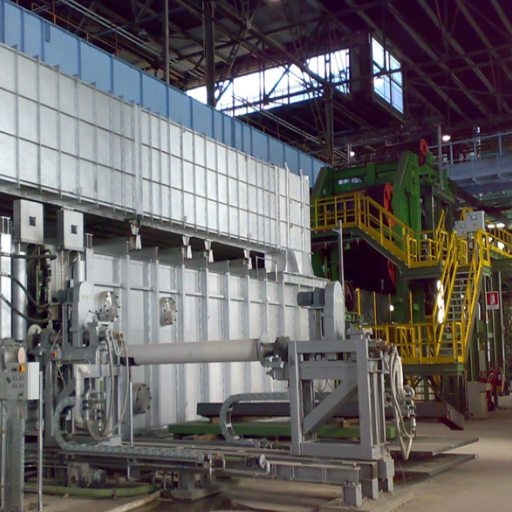
Annealing and pickling processes increase the durability, functionality, and appearance of stainless steel. These processes are crucial in producing stainless steel.
- During annealing, stainless steel is heated to a specific temperature, then cooled slowly. This alleviates internal stresses and makes the material easier to work with by increasing ductility and restoring the metal’s crystalline structure.
- Pickling removes impurities such as oxide scales, rust, and welding residual from the steel’s surface. This causes a smooth surface finish while restoring the material’s resistance to corrosion.
In combination, these actions sharpen stainless steel’s performance and lifespan across a wide range of industries.
Defining Heat Treatment Process in Stainless Steel Manufacturing
Heat treatment is a crucial process for manufacturing stainless steel. It changes the material’s mechanical and physical properties, allowing it to be tailored for specific applications. This process requires the material to be heated and cooled to improve hardness, strength, ductility, and corrosion resistance.
Some of the most common heat treatment processes used in making stainless steel are the following:
- Annealing – This method involves heating stainless steel to a predefined temperature, followed by cooling to a defined temperature. This alleviates internal stresses, improving ductility and making the material more challenging. For example, austenitic stainless steels are often annealed at 1050°C to 1150°C, which provides softening without loss of structural stability.
- Hardening – This is done by heating to high temperatures and then rapidly quenching for some stainless steels, specifically martensitic grades. The resultant material becomes considerably stronger and more resistant to wear. A typical example is in martensitic stainless steels, where hardening is done between 900°C and 1100°C.
- Tempering – This follows after hardening. It consists of lowering the reheating temperature to reduce brittleness while retaining noteworthy strength. Components of stainless steel, such as cutlery and surgical instruments, are aided by this process to have the desired toughness and precision.
- Solution Treatment – This is mainly used on austenitic stainless steels. It involves heating the material to a high temperature (generally between 1000°C and 1100°C) and then rapidly quenching, which removes precipitated carbides. This restores maximum corrosion resistance, which is helpful in food processing equipment or chemical activities.
With these methods of heat treatment, manufacturers have achieved remarkable results with stainless steel products, as their performance is meeting the rigorous requirements in the aerospace, automotive, medical, and construction industries.
Understanding the Pickling Process and Its Purpose
Pickling is one of the most critical steps in steel treatment, as it helps improve and prepare the steel’s surface for optimal performance. It entails using a solution, such as an acid mixture, often made up of nitric acid or hydrofluoric acid, to remove extraneous substances like scale, rust, and even the heat tint that may have formed during manufacturing processes like welding and heat treatment. Pickling as a process restores the smooth, clean surface of stainless steel and adds to its corrosion resistance by removing contaminants.
There are now friendly and greener alternatives for pickling, using acid-free pickling pastes and electrochemical cleaning methods are a few examples. For the effectiveness of any pickling process, the concentration of the solution, treatment time, and the grade of stainless steel being processed must be taken into account. Case studies of industrial applications show that proper pickling reduces the rate of material degradation and extends the lifespan of stainless steel in harsh environments, such as those found in construction, food processing, marine, and other demanding industries.
How Annealing and Pickling Affect Stainless Steel Properties
In different uses of stainless steel, annealing and pickling work together to optimize it. One of the main processes, annealing, improves a material’s ductility by reducing the internal stresses that are built up from manufacturing processes like welding or forming. During annealing, the microstructure of the material is improved, enhancing toughness and workability, by first heating it to a set temperature and then cooling it in a controlled manner.
Pickling helps complete annealing by ensuring that surface contaminants, such as scales or oxides, that occur during high-temperature processes, are entirely removed. This cleaning not only restores stainless steel’s bright and uniform finish, but also makes it a passive surface, improving its corrosion resistance and making it less prone to deterioration in an aggressive environment.
The combination of both processes contributes significantly to the increase in the lifetime service and efficiency of annealed stainless steel. For example, the processes improve stress corrosion cracking resistance and ensure the material is kept hygienic in food processing and pharmaceutical industries. Tested materials have proven that stainless steel treated with both methods has greater mechanical strength and corrosion resistance, making it more useful for extreme application conditions.
Why is Annealed Pickled Stainless Steel Important for Industrial Applications?
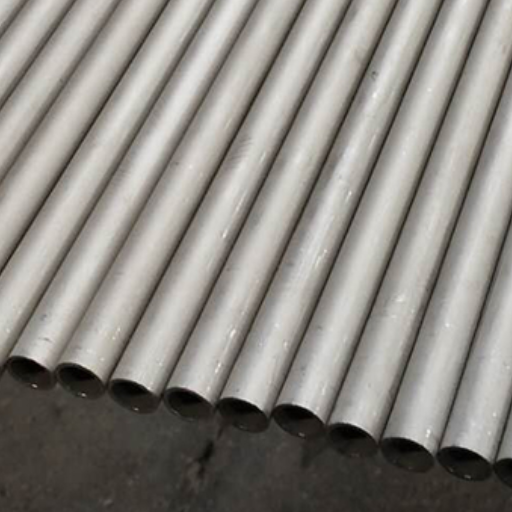
Industrial applications rely heavily on annealed pickled stainless steel due to its improved corrosion resistance, mechanical properties, and a clean, smooth surface. All these factors ensure dependable operations in harsh chemical, high-temperature, or moisture environments. The pickling stage enhances strength and durability by removing impurities, while annealing optimizes structural integrity. This makes it ideal for food processing, pharmaceutical, and chemical manufacturing industries where safety, cleanliness, and durability are imperative.
Benefits of Enhanced Corrosion Resistance in Pickled Stainless Steel
- Prolonged Material Lifespan
Industry studies show that pickled stainless steel lasts up to 20-25 percent longer in corrosive environments compared to untreated stainless steel. Added durability from enhanced corrosion resistance further increases the equipment’s lifespan, allowing stainless steel to withstand prolonged use in harsh conditions.
- Reduced Maintenance Costs
Loss of frequent repairs equals extended equipment life and a smooth operational flow in industry processes. An estimated 30 to 40 percent of maintenance costs are saved over the equipment’s lifetime when constructed with pickled stainless steel.
- Improved Hygiene Standards
The preferred option for food processing and healthcare industries is pickled stainless steel, as its corrosion-resistant, smoother surfaces are less likely to harbor bacteria and contaminants. It is also easier to meet strict hygiene compliance, such as FDA and ISO certifications.
- Enhanced Structural Integrity
Pickling ensures that stainless steel does not have impurities that will lead to corrosion-related damages, which could weaken it, thus retaining its strength.
- Resistance to Harsh Chemicals
Due to its exceptional resistance to corrosive chemicals, pickled stainless steels are best suited for chemical industries. Tests show that compared to untreated materials, pickled stainless steel has 15-20% more resilience to chemical exposure.
- Improved Aesthetic Appeal
Pickling enhances aesthetic attributes by removing surface defects, resulting in a lustrous, untainted surface that is less prone to staining, making it ideal for architectural and decorative purposes.
- Environmental Performance
Pickling stainless steel parts increases their lifespan, which in turn reduces material waste, making it a sustainable approach. Furthermore, pickled stainless steel is fully recyclable, helping to meet eco-friendly manufacturing targets.
Improved Formability and Machinability After Annealing
Annealing helps improve the formability and machinability of stainless steel, which is critical to its properties. To make the steel softer, this treatment relieves internal stresses and reconfigures the microstructure. This grasping softness enables complex forming applications. Enhanced formability enables industries such as automotive and aerospace to design intricate structures without jeopardizing the complex shapes required.
From a machining perspective, annealed stainless steel improves workability by reducing tool wear, energy consumption, and costs for rotating machines. It is reported that the annealing process can reduce material hardness values by as much as 40%. This, in combination with smooth machining operations, enhances productivity. Additionally, the process ensures uniformity across steel batches, which is vital for accuracy in manufacturing and performance reliability.
Surface Finish Quality in Annealed and Pickled Products
The processes of annealing and pickling improve the surface finish of stainless steel by removing scale, oxide layers, and other contaminants that form during high-temperature processes. This treatment provides a clean surface, which is essential for industries with stringent aesthetic and hygiene requirements, such as food processing, medical devices, and architecture. Research indicates that stainless steel, which has undergone annealing and pickling processes, has a lower surface roughness value of less than 0.5 µm, depending on the grade and process parameters. These improvements contribute to a good surface finish and reduce the risk of corrosion attacks by trapping contaminants that can occur due to surface roughness. More challenging pickling methods can help maintain consistency and result in less variability for more demanding applications.
How Does Annealed and Pickled Stainless Steel Compare to Other Finishes?
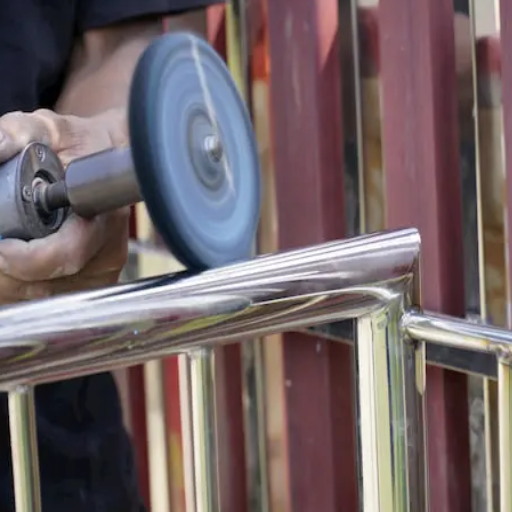
Annealed and pickled stainless steel is more uniform than other finishes and smoother than rough mill finishes, making it ideal for applications requiring cleanliness. The added treatments performed on steel mill finishes to remove scale also improve overall quality. For most industries, this translates to better durability and lower maintenance over time. This finish is ideal for the food processing and pharmaceutical industries because it is easy to clean and resistant to contamination.
Differences Between Annealed Pickled and Bright Annealed Stainless Steel
- Surface Finish
-
-
- Annealed and Pickled: The surface remains dull or matte due to the pickling stage, which removes debris without the need for polishing afterward.
- Bright Annealed: The surface becomes smoothly reflective through bright annealing, thanks to a controlled atmosphere that prevents oxidation during the process.
-
- Corrosion Resistance
-
-
- Annealed and Pickled: Maintains excellent corrosion resistance and withstands exposure to extreme environments. However, the less polished surface may require more maintenance to stay clean.
- Bright Annealed: Possesses outstanding corrosion resistance in oxidizing atmospheres because the smoother surface results in fewer crevices for particulates to gather, leading to quicker and easier maintenance.
-
- Applications
-
-
- Annealed and Pickled: Used for structural work, industrial equipment, and piping, as they do not require meticulous attention to surface finish.
- Bright Annealed: Uses encompass decorative applications, medical instruments, and food processing machinery where the appearance and cleanability are essential.
-
- Production Process
-
-
- Annealed and Pickled: Includes annealing followed by descaling through pickling or grinding to remove surface oxide layers.
- Bright Annealed: A preserved, polished finish is achieved by scale-free inert gas or vacuum annealing.
-
- Appearance
-
-
- Annealed and Pickled: Became non-reflective and dull, and also has rough portions.
- Bright Annealed: Achieved rough, bright, and mirror finish.
-
- Cost
-
-
- Annealed and Pickled: More economical because such finishing processes are simplified in this process.
- Bright Annealed: Additional processing and the need for a controlled atmosphere increase the cost.
-
- Ease of Cleaning
-
-
- Annealed and Pickled: Moderately easy. However, the matte surface can make it more challenging to extract certain stubborn grime.
- Bright Annealed: With a smooth finish, the surface is easier to clean, making it well-suited for hygienic needs.
-
- Typical Thickness Range
-
-
- Annealed and Pickled: Generally available in a greater variety of thicknesses, which can fulfill diverse structural needs.
- Bright Annealed: Typically limited to thinner gauges because finishing lighter materials is more efficient.
-
With these nuances in mind, industries can make well-informed decisions on the type of stainless steel finish to use, considering the application, budget, and performance requirements.
Comparing Pickled Stainless Steel with Other Surface Treatments
Compared to surface treatments like polished, brushed, or passivated finishes, pickled stainless steel offers several distinct advantages. One significant benefit of pickling is the removal of surface oxides and contaminants that accompany welding and high-heat processing. Cleaning surfaces like this improves corrosion resistance, which is especially important in harsh environments, such as chemical processing and marine settings, where durability is crucial.
In comparison to polished or brushed stainless steel, pickled tends to be less reflective, which can be beneficial to functional rather than aesthetic applications. Also, brushed and polished finishes require more excellent maintenance to preserve their appearance, while pickled finishes are more forgiving and require less upkeep.
Research also shows that removing surface impurities, along with microscopic smoothing, enhances adhesion and weldability on pickled stainless steel surfaces. Because of this, pickled stainless steel is ideal for fabrication processes that involve heavy welding or coatings, such as paint and sealants.
In industries like food processing and pharmaceuticals, where hygiene is crucial, pickled stainless steel is handy for meeting cleanliness and hygiene standards. Compared to untreated or mechanically finished surfaces, pickled surfaces are safer because they clean a surface and minimize the amount of crevices that harbor bacteria and dirt, thereby reducing the chance of contamination.
Overall, the decision on which surface treatment to use is based on several factors, including how the surface resists corrosion, its visual appearance, maintenance requirements over time, and the budget. Through these considerations, pickled stainless steel emerges as a flexible and dependable option due to its reliable performance in a wide range of industries and commercial activities.
What Are the Common Types of Annealed Pickled Stainless Steel Products?
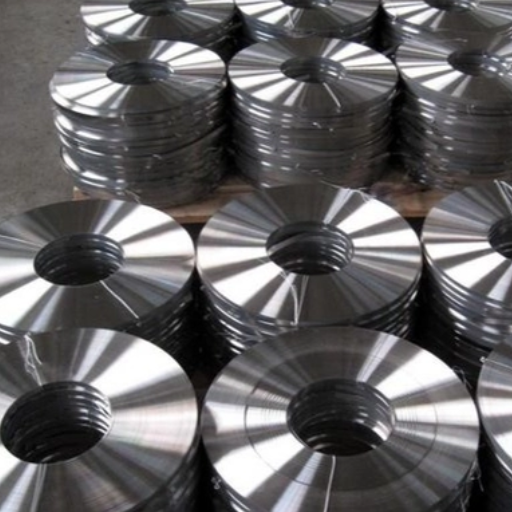
Annealed pickled stainless steel products commonly come in the following shapes:
- Plates: stainless steel parts that are rectangular and thick, used as components in construction, structures, or industry.
- Sheets: Manufactured steel pieces that have a low thickness and are often used to create appliances, kitchen tools, and car components.
- Coils: Stainless steel that has been rolled for further use, like stamping or fabrication, in a variety of industries.
- Pipes and Tubes: Stainless steel components in the shape of hollow cylinders, used to transport fluids and in construction or aerospace.
- Bars and Rods: Long, solid stainless steel components, commonly used in machining, tooling, and architecture.
These products are known for smooth finishing, stunning surface, and adaptability.
Annealed Pickled Stainless Steel Seamless Pipe and Tubing
Rigorously refining seamless pipes and tubes enhances both durability and rust resistance. First, industriales relieve internal stress. Annealing improves ductility, and then the item undergoes pickling to clear surface impurities and scalding. In comparison to other options, these pickled and stainless steel seamless pipes and tubes perform well in extreme conditions. Other than that, when precision is a priority alongside strength and well-mastered craftsmanship, these are optimally relied on. They are a preferred solution in the chemical processing industry, the oil and gas field, and power plants.
Stainless Steel Capillary Tubes: Properties and Applications
Stainless steel capillary tubes have wonderfully distinctive features that make them suitable for use in many industries. Here is a comprehensive list of these outstanding features:
- Corrosion Resistance: Exceptional resistance to rampant corrosion in chemical, saltwater, and high humidity environments.
- High Strength: It has unique tensile strength and durability, which can be exploited in extreme applications.
- Small Diameter Precision: Smallest possible diameters and tight tolerances are achieved through multifaceted processes.
- Temperature Resistance: Very low and very high temperatures can be sustained without any loss of function or failure.
- Non-reactive Surface: Can be used to transfer sensitive fluids or gases because the surface is chemically inert.
- Flexibility: While maintaining integrity, it shows excellent flexibility and bendability.
- Long Lifespan: Designed for long-term usage, providing excellent ROI.
Applications of Stainless Steel Capillary Tubes
The features of stainless steel capillary tubes make them relevant both industrially and scientifically. Below are the primary areas where they are used:
- Medical and Pharmaceutical Industry
-
-
- Used in precision instruments, surgical tools, and catheters for their biocompatibility and precision.
- Medical devices transport gas or liquid through specific devices.
-
- Chemical Processing
-
-
- Transfer of chemicals in a corrosive fluid in controlled environments.
- High strength and inertness make them suitable for high-pressure applications.
-
- Oil and Gas Industry
-
-
- Essential for hydraulic tubing in offshore drilling.
- Control flow and monitoring system in refineries.
-
- Power Generation
-
-
- Heat exchangers, condensers, and other monitoring instruments in power plants.
-
- Aerospace and Automotive
-
-
- Aircraft and gas turbines have high-precision fluid transfer systems.
- Fuel injection systems for automotive vehicles.
-
- Instrumentation and Control Systems
-
-
- Measuring instruments provide actuated control, such as pressure, thermometers, and flow controllers.
- Very delicate and accurate measurements make them ideal for assisted gas and fluid transport.
-
- Food and Beverage Industry
-
-
- Processed and packaged liquids or gases are transported hygienically, with minimal risk of contamination.
- Have easy cleaning protocols to maintain sanitation.
-
- Environmental and Research Applications
-
-
- Used for Air, Water, and Soil testing, monitoring, and sampling systems.
- Used as lab equipment and for scientific research.
-
Properties and stainless steel capillary tubes applications highlight its usefulness and dependability for contemporary technological and industrial requirements.
Duplex Stainless Steel Grades After Annealing and Pickling
Duplex stainless steel types are known for their high strength, superb corrosion resistance, and lower costs compared to austenitic or ferritic stainless steels. These steels, after undergoing annealing and pickling processes, possess properties suitable for industries’ challenging applications.
- Enhanced Properties
-
-
- Corrosion Resistance: Annealing and pickling improve resistance to pitting, crevice corrosion, and stress corrosion cracking over time, particularly in chloride-rich environments.
- Mechanical Strength: Duplex grades have higher tensile strength, making them suitable for heavier-duty applications while using less material.
-
- Common Grades and Their Applications
-
-
- 2205 (UNS S32205): Perfect for chemical and pressure vessel plants as well as for marine environments because of its strength and corrosion resistance.
- 2507 (UNS S32750): Used offshore in oil and gas, desalination plants, and heat exchangers, this super-duplex grade has excellent tensile strength and corrosion resistance.
- 2101 (UNS S32101): This lean duplex grade is used for architectural and structural applications due to its good mechanical properties and cost efficiency.
-
- Improved Weldability Post-Treatment
-
-
- After annealing and pickling, duplex grades exhibit better uniform weldability, which provides reliability during fabrication without compromising corrosion resistance at weld points.
-
These traits are why duplex stainless steel grades are gaining popularity in sophisticated engineering and construction projects.
What Industry Standards Apply to Annealed and Pickled Stainless Steel?
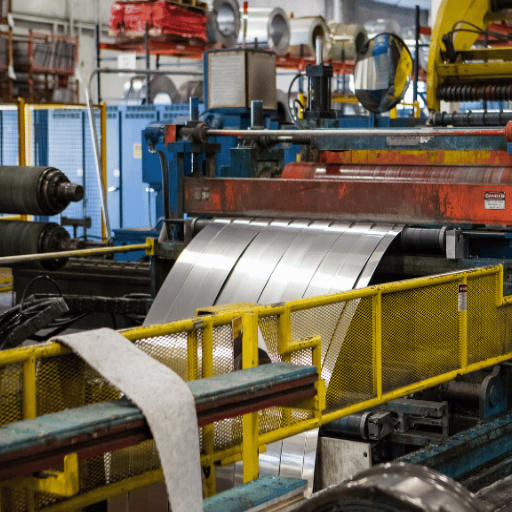
Annealed and pickled stainless steel has to undergo great strain in the industry to guarantee its quality and performance. Some of the most important ones are:
- ASTM A240 – Sets forth conditions that must be met for chromium and chromium-nickel stainless steel plates, sheets, and strips, as well as their applications within pressure vessels and for general purposes.
- EN 10088-2 – Applies to flat products of stainless steel and their intended use, emphasizing the technical conditions of delivery.
- ASME SA240 – Folds under the same umbrella as ASTM A240 and makes sure the stainless steels used for boilers and pressure vessels are up to par.
- ISO 15510 – Ensures standardization of the chemical composition of stainless steel grades over a particular region.
These standards encompass a wide range of industrial applications by specifying the required material properties, including chemical composition, mechanical performance, surface finish, and more.
ASTM Standards for Pickled Stainless Steel Seamless Pipe
ASTM standards are pivotal in determining the quality and actual market value of pickled stainless steel seamless pipes. These criteria ensure that the pieces function properly in critical areas such as chemical, oil, and gas, and food processing industries. Some of the most important ones are:
- ASTM A312 – Covers pipes made of wrought austenitic stainless steel, welded and heavily cold-worked seamless austenitic stainless steel pipes, including requirements for use and test conditions of the composition and high temperature and corrosive environment.
- ASTM A269 – Addresses seamless and welded austenitic stainless steel tubing suitable for general corrosion resistance and low to moderate temperatures. This is important where uniform wall thickness is critical.
- ASTM A511 covers seamless stainless steel mechanical tubing, primarily used for mechanical work, with notable features including hardness and surface condition.
- ASTM A790 deals with duplex stainless steel pipes, including both seamless and welded ones, which have good stress corrosion cracking resistance and high strength.
All the abovementioned benchmarks take care of the seamless pickled stainless steel pipes, focusing on construction, steady deterioration, and endurance to withstand extreme situations. All manufacturers and suppliers of these pipes follow the same principles and aim to meet the world’s safety standards.
ASTM A269 Requirements for Annealed Pickled Stainless Steel Tubing
In terms of A269, seamless and welded austenitic stainless steel tubing are intended for general corrosion resistance and low- or high-temperature service. Therefore, the tubing must be fabricated from high-quality material that is also durable, strong, and resistant.
Key requirements include:
- Chemical Composition: Under this section, the alloy composition of the tubing must have certain bounds, which are defined in the standard, and have enough chromium, nickel, and molybdenum so as not to be corroded and to stand up structurally.
- Dimensions and Tolerances: The tubing must adhere to specific dimensional tolerances for wall thickness, outer diameter, and straightness. Generally, the wall thickness is ±0.005 inches, and the outer diameter is ±0.007 inches.
- Mechanical Properties: Tubing must meet specific requirements for minimum tensile strength and yield strength to ensure it can withstand mechanical stress. Annealed tubing, for instance, is expected to meet a minimum tensile strength of approximately 75 ksi (517 MPa).
- Surface Finish: The pickling stage is crucial for removing oxide scales and providing a smooth, clean surface free from defects, which improves corrosion resistance.
- Testing Standards:
-
-
- Hydrostatic Testing: The tubing is exposed to internal pressure to test its leak-proof construction and durability.
- Eddy Current Testing: This Non-Destructive Testing (NDT) technique is used to detect surface and subsurface flaws that can compromise the material’s structural integrity.
-
- Heat Treatment: The tubing must undergo appropriate annealing to relieve internal stresses caused during manufacturing, while also improving its ductility.
Such specifications ensure that annealed, pickled stainless steel tubing made to ASTM A269 will perform adequately in critical industrial applications, such as chemical processing systems, as well as in maritime environments. Compliance with ASTM A269 serves to reinforce the global quality framework for stainless steel tubing.
Tolerance Specifications and Steel Grade Considerations
Manufacturing of stainless steel tubing, especially under the ASTM A269 standard, requires a great deal of accuracy and uniformity. The order of these tolerances determines the angle of permitted deviation in measurements, such as wall thickness, outside diameter, and degree of straightness. For instance, standard seamless stainless steel tubing may feature stringent outside diameter tolerances of ±0.005 inches to ±0.010 inches, depending on the size. Rotational wall thicknesses also ensure the structural integrity of the plumbing, automatically adjusting by a factor of ten percent of the nominal wall thickness for most grades.
Choosing the right steel grade is essential for fulfilling the varied operational requirements. 304 and 316 stainless steel, for example, are common grades with good corrosion resistance. However, 316 is preferred in marine environments due to its higher molybdenum content. For certain chemicals or high-temperature applications, 321 and 347 are preferred due to their thermal stability and resistance to sensitization. Each grade undergoes a careful balance of mechanical components and environmental stressors to ensure dependability for the intended application. With tight tolerances and careful grade selection, manufacturers produce tubing that fulfills precision engineering standards and reliable performance over time.
Reference Sources
- “Advances in Annealing and Pickling Processes for Stainless Steel Pipes” (2020)
Key Findings: This study explores modern innovations in the annealing and pickling processes used for stainless steel pipe production. The research highlights enhanced methods for achieving superior corrosion resistance and surface finish while minimizing environmental impact. The methodology involved a comparative analysis of traditional and advanced chemical treatments, with the latter showing significant improvements in efficiency and consistency.
Published in: Journal of Materials Engineering and Performance.
- “Corrosion Resistance Improvements in Annealed and Pickled Stainless Steel Pipe” (2021)
Key Findings: This paper focuses on the role of advanced annealing temperatures, combined with optimized pickling treatments, in reducing intergranular corrosion in stainless steel pipes. Using electrochemical analysis and surface characterization techniques, the study concluded that modified processes could extend the life span of pipes in highly corrosive environments.
Published in: Corrosion Science Today.
- “Sustainability in Stainless Steel Processing – Innovations in Annealing and Pickling Techniques” (2019)
Key Findings: Researchers analyzed the environmental footprint of the annealing and pickling processes, proposing eco-friendly chemical alternatives to standard pickling acids. The findings underscored a significant reduction in waste byproducts while maintaining high standards of quality for stainless steel pipes.
Published in: Sustainable Materials and Technologies.
- “Microstructural Evolutions in Annealed Pickled Stainless Steel Pipe” (2022)
Key Findings: This study used advanced microscopy techniques to examine the microstructural changes that occur during the annealing and pickling processes. The research demonstrated how precise thermal control and acid compositions can optimize mechanical properties such as tensile strength and ductility.
Published in: Metallurgical and Materials Transactions A.
- “Effect of Pickling Solutions on Austenitic Stainless Steel Pipes” (2023)
Key Findings: This recent study examines the effect of various pickling solutions and process parameters on the surface properties of austenitic stainless steel pipes. It highlights the importance of balancing chemical concentration and treatment duration to minimize surface defects while achieving a high-quality passivation layer.
Frequently Asked Questions (FAQs)
Q: What is the annealing and pickling process for stainless steel tube and pipe?
A: Annealing is a heat treatment process where stainless steel tubes and pipes are heated to specific temperatures (typically 1900-2100°F for austenitic grades) and then cooled in a controlled manner. This relieves internal stresses, increases ductility, and restores corrosion resistance. Pickling follows annealing and involves treating the surface with acid solutions to remove scale, oxides, and contaminants formed during annealing. Together, these processes on annealing and pickling lines ensure that the annealed and pickled stainless steel has optimal mechanical properties and surface quality.
Q: What are the benefits of using annealed and pickled stainless steel seamless pipe versus other finishes?
A: Annealed and pickled stainless steel seamless pipe offers several advantages: improved corrosion resistance, enhanced formability and ductility, uniform mechanical properties, stress relief that prevents warping during fabrication, and a clean matte finish that’s ideal for further processing. High-quality, annealed, pickled stainless steel is particularly valuable in critical applications where material integrity is crucial. This finish is standard for many applications and serves as an excellent base for further finishing operations, such as polishing or passivation, especially for grades like 316L stainless steel.
Q: How do annealing and pickling lines affect the properties of 316L stainless steel?
A: For 316L stainless steel, annealing and pickling lines significantly enhance its already excellent properties. The annealing process recrystallizes the grain structure, removes work-hardening effects, and restores the material’s optimal corrosion resistance by ensuring that chromium is fully dissolved in the matrix, rather than being tied up in carbides. The pickling process removes the chromium-depleted layer and other surface contaminants. This combination maximizes 316L’s already superior corrosion resistance, particularly to chlorides, improves ductility, and ensures the material maintains its austenitic structure for better performance in demanding environments.
Q: What standards govern seamless stainless steel pipe ASTM specifications?
A: Several ASTM standards govern seamless stainless steel pipe: ASTM A213 covers seamless ferritic and austenitic alloy steel tubes for boilers and similar applications; ASTM A269 stainless steel specifies general service austenitic stainless steel tubing; ASTM A312 covers seamless and welded austenitic stainless steel pipes; and ASTM A790 covers seamless and welded duplex stainless steel pipe. For welded products, the ASTM A688 standard applies to welded steel pipe, including austenitic stainless steel feedwater heater tubes. Each standard has specific requirements for chemical composition, mechanical properties, and testing procedures that quality annealed and pickled materials must meet.
Q: How does the weld quality in stainless steel welded pipe compare to seamless steel options?
A: Stainless steel welded pipe, when manufactured adequately with modern techniques like automated TIG or laser welding, can approach the performance of seamless steel pipe in many applications. However, there are differences: welded pipe contains a weld seam that may be slightly more susceptible to corrosion in highly aggressive environments. Seamless pipe provides uniform properties throughout with no weld zone, making it preferred for high-pressure, high-temperature, or highly corrosive applications. Both welded and seamless options can utilize annealing and pickling processes to enhance their properties. However, seamless stainless steel tubes typically command a premium price due to their more complex manufacturing and superior performance in critical applications.
Q: What are the different finishing options available for stainless steel round products after they are annealed and pickled?
A: After the base annealing and pickling process, stainless steel round products can receive several finishing treatments: bright annealed tube processing in hydrogen atmospheres for mirror-like finishes without pickling; mechanical polishing to create semi-bright or highly polished stainless finishes; passivation for enhanced corrosion resistance; shot blasting for textured finishes; cold rolled finishes for tighter dimensional control; and specialized surface treatments like electropolishing. For specific applications requiring distinct surface characteristics, options include matte finishes (standard after pickling), 2B (cold-rolled after annealing and pickling), and #4 polished stainless finishes, which are popular for architectural applications.
Q: How does the annealing process differ between austenitic stainless steel like TP316L and duplex stainless steel pipe?
A: The annealing process differs significantly between austenitic grades like TP316L and duplex stainless steel pipe due to their different metallurgical structures. Austenitic stainless steel (316L) is typically annealed at 1900-2100°F (1040-1150°C) to dissolve carbides and relieve stresses. Duplex stainless steel pipe requires more precise temperature control, usually around 1850-1950°F (1010-1070°C), to maintain the proper balance between austenite and ferrite phases. If duplex is annealed too hot or cooled improperly, the critical phase balance can be disrupted, compromising its corrosion resistance and mechanical properties. Both materials then undergo pickling, but duplex alloys often require stronger acid mixtures due to their higher chromium content.
Q: What are the key differences between hot rolled and cold rolled, annealed, and pickled stainless steel?
A: Hot-rolled and cold-rolled, annealed, and pickled stainless steel differ in several key aspects. Hot rolled material is processed above its recrystallization temperature (typically >1650°F), resulting in a scale-covered surface that requires pickling. It has less precise dimensional tolerances and a rougher surface finish. Cold-rolled material is processed below recrystallization temperature, creating work hardening that requires subsequent annealing. It offers superior surface quality, tighter dimensional tolerances, and better mechanical properties. After cold rolling, the material typically goes through annealing and pickling lines to restore ductility and corrosion resistance. Cold-rolled products generally command higher prices due to the additional processing steps and superior quality, particularly important for visible applications or precision components.
Q: How does the tube annealing condition differ from other annealing methods for stainless steel seamless tube?
A: Tube annealing refers to a specific annealing protocol optimized for tubular products where the stainless steel seamless tube is heated to its solution annealing temperature and then rapidly cooled to prevent carbide precipitation. This differs from other annealing methods, such as batch annealing (where multiple products are processed together) or continuous annealing, which is used for strip and sheet. Tube annealing typically yields better dimensional stability and more uniform properties throughout the tube’s cross-section compared to general annealing. For critical applications, manufacturers may specify bright annealing in controlled hydrogen or nitrogen atmospheres instead of traditional annealing and pickling. This produces superior, surface-quality annealed products with mirror-like finishes, while maintaining excellent mechanical properties and corrosion resistance.

